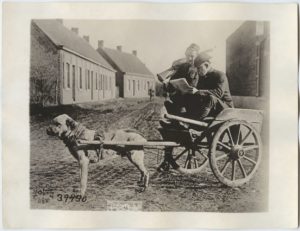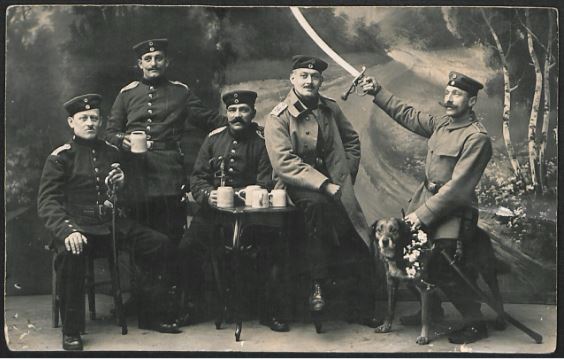This National K9 Veterans Day, we celebrate the military and working dogs that stood alongside American soldiers during World War I.
Dogs played a military role for most European armies. They hauled machine gun and supply carts, and were messengers often delivering their missives under a hail of fire. According to one French source, at one time during the war “more than two thousand dogs” were in service on the Western Front. Let’s look at some of the many ways dogs “fought” for their country during this global war.
Helping the wounded
During the war, all armies had organized medical corps ready to go to the front lines. Stretcher-bearers ran out onto the battlefields to dress wounds and carry the wounded to aid stations. Dogs were also used to locate and help the wounded.
French first aid dogs were selected and carefully trained, often for months, to go onto battlefields and locate wounded soldiers. They were trained to either stay with the soldier until human aid came or to bring back evidence of the wounded poilu (French soldier). Many actually carried first aid kits in packs on their backs for immediate use by the wounded.
Catching rats
The French, among others, used small dogs as rat catchers in the trenches. Rats were the overwhelming scourge of trench life and those rat killer dogs proved invaluable.
Supporting the soldiers

Popular with soldiers from both sides, mascots, especially dogs, played an important role in morale building and creating a feeling of home life under war conditions. In speaking of his faithful dog, Moritz, German flying ace, Baron Manfred von Richthofen said: “The most beautiful being in all of creation is the genuine Danish hound my little lap dog, my Moritz.” The Red Baron even took Moritz up in his plane on occasion.
On March 13th, we commemorate all the brave military dogs who supported the U.S. troops during the First World War by recognizing their many roles. If you’d like to do more, consider adopting a retired K9 dog. Often, these four-legged warriors are left without homes after their service ends.










